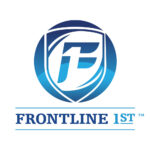In today’s rapidly evolving digital landscape, businesses are under increasing pressure to deliver seamless customer experiences while ensuring operational efficiency. Salesforce, a leader in customer relationship management (CRM), and MuleSoft, a top-tier integration platform, offer a powerful combination to tackle these challenges. This holistic solution is a game-changer for businesses aiming to unify data, streamline workflows, and create connected customer experiences.
The Power of Salesforce and MuleSoft
Salesforce enables organizations to manage their customer relationships effectively by centralizing data and processes. MuleSoft, on the other hand, provides an API-led approach to integration, allowing businesses to connect disparate systems, applications, and data sources efficiently. Together, they form the backbone of a robust lead-to-cash process, enabling businesses to:
1) Unify Customer Data: Break down silos by integrating Salesforce with backend systems like ERP, databases, and custom apps.
2) Automate Workflows: Simplify complex business processes, such as order management and billing, by leveraging MuleSoft Flow Designer.
3) Accelerate Time to Market: Quickly build and deploy integrations using MuleSoft’s pre-built connectors, including those for Salesforce.
4) Enhance Customer Experience: Deliver personalized experiences by providing real-time, unified views of customer data.
Key Strategies for Successful Integration
Achieving success with Salesforce and MuleSoft requires careful planning and execution. Here are some essential strategies to ensure a smooth implementation:
1) Define Clear Objectives: Start by identifying the business goals you aim to achieve with the integrations. Whether it’s streamlining the lead-to-cash process or improving customer support, having a clear vision ensures alignment across teams.
2) Adopt API-Led Connectivity: MuleSoft’s API-led approach is pivotal for scalable integrations. Design reusable APIs for systems, processes, and experiences. This modular strategy allows flexibility and rapid development for future integrations.
3) Leverage Pre-Built Connectors: MuleSoft provides an extensive library of connectors for Salesforce and other popular systems. Using these connectors minimizes development time and ensures reliability.
4) Assemble Team of Experts: When you connect two systems, you need subject matter experts from both systems to dictate the data requirements of each. The Frontline 1st team can work with your system teams to align on feasibility, map fields, and provide business process alternatives when there is a technical limitation. Then Frontline 1st can take the mapping provided and incorporate it into key workflows, provide transformation guidance, and establish handshakes as means of communication between the systems.
5) Focus on Data Governance: Ensure data integrity and compliance by setting up robust governance policies. The MuleSoft Anypoint Platform provides tools to monitor and secure data flows. As systems and data needs evolve, data governance becomes critical to ensure that data is consistent, trustworthy and doesn’t get misused.
6) Test Thoroughly: Conduct rigorous testing to identify and resolve issues before going live. Use MuleSoft Anypoint Monitoring to track integration performance and ensure smooth operation.
Salesforce and MuleSoft Use Cases
The Salesforce + MuleSoft solution has proven invaluable across various industries. Here are some real-world applications:
1) Financial Services: Integrate Salesforce Financial Services Cloud with legacy banking systems to provide a 360-degree view of client accounts.
2) Manufacturing: Streamline supply chain operations by integrating Salesforce with production and logistics platforms.
3) E-Commerce: Seamlessly connect Salesforce Commerce Cloud with ERP systems to automate inventory updates and order processing.
4) Healthcare: Connect Salesforce Health Cloud with Electronic Health Record (EHR) systems for a unified patient experience.
Business Transformation with Modern Cloud Technologies: A Utility Company’s Journey
A large utility company replaced their legacy IT infrastructure with modern, cloud-based technologies. As part of this transformation, the firm chose SAP as the ERP and Salesforce Field Service to streamline workforce dispatching. Once fieldwork was completed, the data flowed back into SAP for further financial processing. To securely manage the exchange of data, the company adopted MuleSoft as its integration layer.
Strategic Team Structure: Key to Success
The team structure played a pivotal role in ensuring the success of this transformation. The firm assembled subject matter experts (SMEs) from finance, supply chain, operations, and fieldwork to define the data needs and processes for each system. These SMEs collaborated with SAP and Frontline 1st Salesforce + MuleSoft experts, who translated requirements into proof-of-concept designs, risk mitigation strategies, and technical feasibility studies.
For example, tracking critical data required by field workers was a challenge because SAP’s upstream systems did not allow users to add custom attributes to certain entities. To address this, the teams devised innovative solutions to ensure that essential data was accessible to field workers using Salesforce Field Service Lightning mobile applications.
A Systematic Approach to Data Management
The technical teams adopted a structured approach to manage data across SAP, MuleSoft, and Salesforce. They maintained a comprehensive table where each row represented:
- The specific field.
- The originating system (e.g., SAP).
- The destination system (e.g., Salesforce).
- The confidentiality level of the field.
- Whether the field was a required attribute.
- The data owner for that field.
The table also detailed any required transformations within MuleSoft. If no transformation was necessary, the teams marked the data as a passthrough.
This meticulous documentation ensured clarity for all three teams about the data being transferred between systems. It also provided a roadmap for managing transformations and highlighted data ownership responsibilities.
Planning for Robust Integration
The teams proactively addressed potential challenges by discussing error handling and retry mechanisms to mitigate issues caused by system downtimes or failures. This preparation ensured that the integration layer could handle disruptions gracefully, minimizing impact on operations.
By leveraging modern cloud technologies and fostering cross-functional collaboration, the utility company successfully transformed its IT landscape. Their strategic use of SAP, Salesforce, and MuleSoft, combined with a systematic approach to data management and error handling, set the foundation for a resilient and efficient digital ecosystem. This case exemplifies the power of careful planning, teamwork, and innovative problem-solving in achieving digital transformation.
Conclusion: Salesforce and MuleSoft Enable True Digital Transformation
Salesforce and MuleSoft are key ingredients for a successful digital transformation. By leveraging the strengths of both platforms, businesses can create unified, efficient, and customer-centric processes that drive success. With clear objectives, an API-led approach, and robust testing, organizations can unlock the full potential of critical integrations and stay ahead in the competitive digital landscape. Contact Frontline 1st to learn more about how we can make your MuleSoft implementation a success story.











